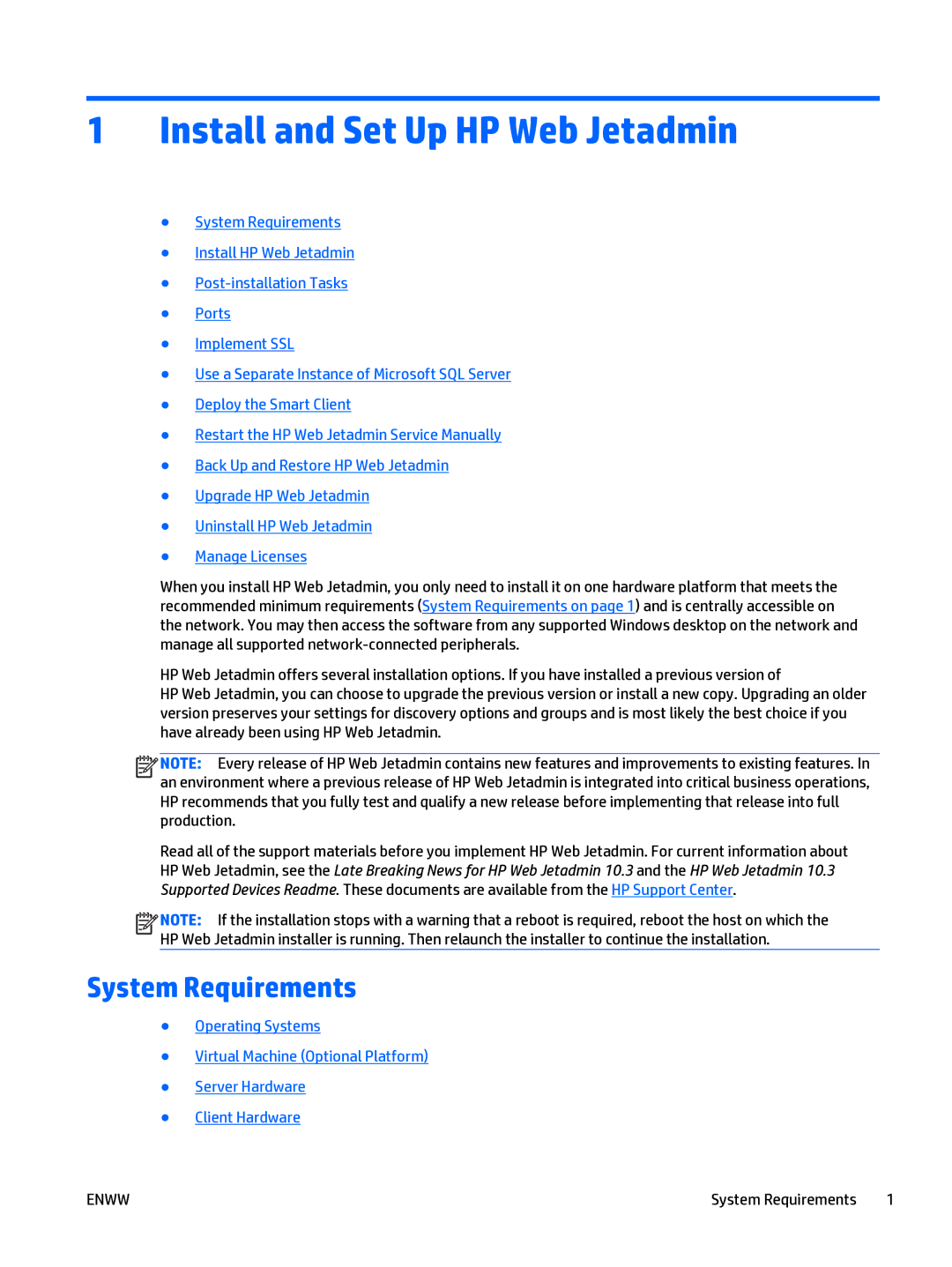
1Install and Set Up HP Web Jetadmin
●System Requirements
●Install HP Web Jetadmin
●
●Ports
●Implement SSL
●Use a Separate Instance of Microsoft SQL Server
●Deploy the Smart Client
●Restart the HP Web Jetadmin Service Manually
●Back Up and Restore HP Web Jetadmin
●Upgrade HP Web Jetadmin
●Uninstall HP Web Jetadmin
●Manage Licenses
When you install HP Web Jetadmin, you only need to install it on one hardware platform that meets the recommended minimum requirements (System Requirements on page 1) and is centrally accessible on the network. You may then access the software from any supported Windows desktop on the network and manage all supported
HP Web Jetadmin offers several installation options. If you have installed a previous version of
HP Web Jetadmin, you can choose to upgrade the previous version or install a new copy. Upgrading an older version preserves your settings for discovery options and groups and is most likely the best choice if you have already been using HP Web Jetadmin.
![]()
![]()
![]()
![]() NOTE: Every release of HP Web Jetadmin contains new features and improvements to existing features. In an environment where a previous release of HP Web Jetadmin is integrated into critical business operations, HP recommends that you fully test and qualify a new release before implementing that release into full production.
NOTE: Every release of HP Web Jetadmin contains new features and improvements to existing features. In an environment where a previous release of HP Web Jetadmin is integrated into critical business operations, HP recommends that you fully test and qualify a new release before implementing that release into full production.
Read all of the support materials before you implement HP Web Jetadmin. For current information about HP Web Jetadmin, see the Late Breaking News for HP Web Jetadmin 10.3 and the HP Web Jetadmin 10.3 Supported Devices Readme. These documents are available from the HP Support Center.
![]()
![]()
![]()
![]() NOTE: If the installation stops with a warning that a reboot is required, reboot the host on which the HP Web Jetadmin installer is running. Then relaunch the installer to continue the installation.
NOTE: If the installation stops with a warning that a reboot is required, reboot the host on which the HP Web Jetadmin installer is running. Then relaunch the installer to continue the installation.
System Requirements
●Operating Systems
●Virtual Machine (Optional Platform)
●Server Hardware
●Client Hardware
ENWW | System Requirements 1 |
